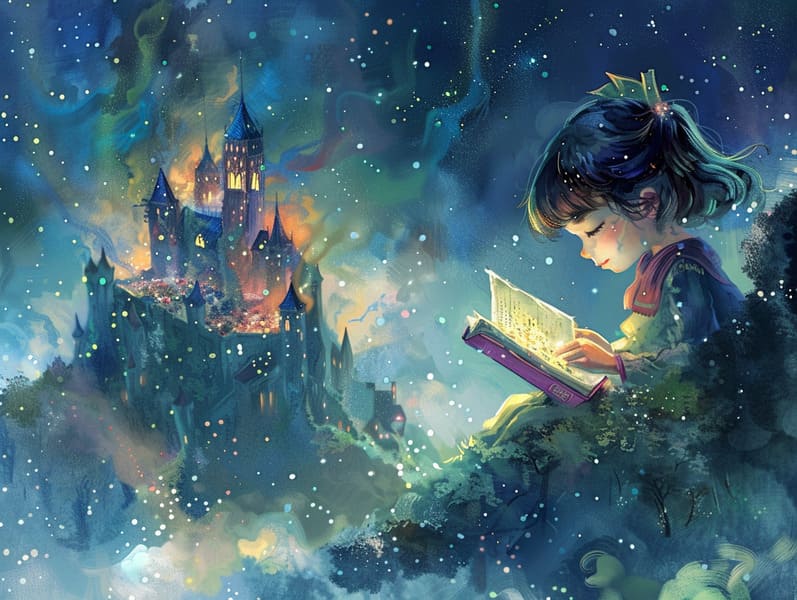Uncovering the Past of Grimm's Fairy Tales and the Ageless Splendor.
Uncovering the Past of Grimm's Fairy Tales and the Ageless Splendor.
Blog Article

Fairy tales for kids have deep roots. These stories have been conveyed from one generation to the next centuries before they were ever documented. They developed from a variety of cultures, including European traditions. They were initially shared among adults, often carrying themes and messages concerning the societal norms and beliefs of the time.
The renowned Brothers Grimm, the two Grimm brothers, were among the first to gather and publish many of these beloved fairy tales. Their collection, "Grimm's Fables," included stories like "Cinder Maid," "The Story of Hansel and Gretel," and "Little Snow White," which have since become staples in the world of children's fairy tales. Similarly, the Danish author's delightful fairy tales, such as "The Mermaid's Tale," and "The Story of the Ugly Duckling," have won hearts worldwide, cementing their place in the pantheon of treasured fairy tales.
Despite being ancient, fairy tales remain as applicable as ever, especially as bedtime stories for kids. These enchanting tales are now available in diverse formats, including beautifully illustrated books, magical animations, and digital storybooks.
Their persistent charm can be traced to several whimsical characteristics:
Moral Lessons: Traditional fairy tales often provide important moral lessons. Stories like "The Story of the Boy Who Cried Wolf" teach the value of truthfulness, while "The Hare and the Tortoise" underline the virtues of perseverance and unassuming nature. These narratives offer kids clear distinctions between virtue and vice, building their moral compass in a soft yet lasting way.
Sympathy and Perception: Fairy tales frequently feature figures facing trials and tribulations, prompting young listeners to understand with their struggles and boost their triumphs. For instance, "Beauty and Her Beast" illustrates the necessity of looking past the exterior to perceive the true nature of a being, strengthening warmth and appreciation.
Cultural Recognition: Many traditional fairy tales are deeply embedded in the cultural contexts from which they sprang. Delving into these tales can provide fascinating glimpses into different societies, fostering a sense of global insight and appreciation.
Imagination and Innovation: The fantastical elements in traditional fairy tales—enchanted forests—invigorate children’s creative minds. These fairy tales carry readers to mythical realms, enhancing creative thinking and a sense of fascination that remains a lifetime.
Traditional fairy tales are not only spellbinding but also edifying. They function as delightful tools in advancing various cognitive and emotional skills in the young. When traditional fairy tales are told out loud, they improve language skills by showing new language items and elaborate sentence structures. This practice also develops listening skills and mindfulness, as little ones focus on every detail, enthusiastic to see what happens next.
Furthermore, conversing about the themes and characters of fairy tales can strengthen analytical skills and problem-solving abilities. Little ones are instructed to find patterns, predict happenings, and catch on to cause and effect. These talks also advance the young say their thoughts and feelings, promoting their emotional intelligence.
In today’s information age, the proliferation of web-based fairy tales has made these stories more reachable than ever. Internet resources and apps present broad selections of timeless fairy tales that can be experienced or played anytime, anywhere. Fairy tales recited are particularly well-received, supplying an fascinating method for young readers to engage with these enchanting tales. Read-aloud stories and read-out-loud videos take characters and settings to life, often supported by delightful melodies and melodies that improve the narrative journey.
The unfading fascination of ancient fairy tales lies in their ability to change to the present while staying true to their underlying messages. Contemporary reimaginings of these tales often show more representative protagonists and modern settings, making them meaningful to today’s audience. However, the fundamental themes of heroism, sympathy, and lawfulness remain unchanged, continuing to appeal to readers of all ages.
Timeless fairy tales also offer a sense of comfort and predictability. They present a coherent narrative with a recognizable beginning, middle, and end, often drawing to a close with the wrap-up of conflicts and the triumph of justice over injustice. This constancy can be placating for kids, extending a sense of invariability in an fluid world.
Old fairy tales continue to spellbind and educate new generations, maintaining their grandeur and value in modern society. As children's bedtime stories, they confer a perfect blend of allure and teaching, nourishing moral values, empathy, and creativity. The existence of digital fairy tales and the commonness of fairy tales read out loud certify that these classic tales remain accessible to new generations.
By upholding and narrating these fairy tales, we continue to celebrate the rich tapestry of creativity and cultural heritage. Whether you are reading a beautifully illustrated book, seeing a web-based library, or listening on an audiobook, the beauty of bedtime fairy tales is always within reach. These narratives show us of the steadfast power of storytelling and its ability to unite us across eras and regions.
Regardless if you are reading a richly illustrated book, discovering a virtual library, or listening to an narrated book, the captivation of popular fairy tales is website always within reach.
These fairy tales highlight of the unchanging essence of tales and its ability to bond us across epochs and places, weaving a spell that charms and informs alike.